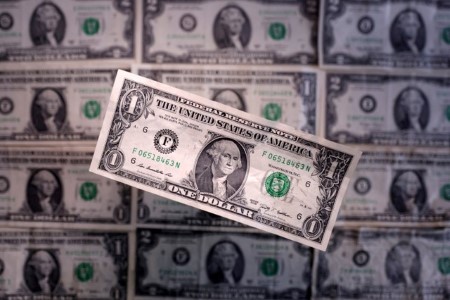




Quarterly Economic Growth Release: More BSP cuts to come
 DOWNLOAD
DOWNLOAD

Monthly Economic Update: Fed catches up
 DOWNLOAD
DOWNLOAD

Inflation Update: Steady and mellow
 DOWNLOAD
DOWNLOAD


US yields slip further ahead of heavy data slate

NEW YORK – US Treasury yields eased to near three-week lows on Monday, marking the half-way unwind from this month’s bond rout as a dearth of new tariff news allowed investors to zero in on impending economic data, crowned by Friday’s payrolls report.
Trading was more muted than in recent weeks of high volatility, when US President Donald Trump sent Treasuries tumbling and benchmark yields up about 70 basis points amid fear that his erratic announcements on import levies made dollar-based assets less secure, and US and global economic growth less assured.
With month-end on Wednesday, along with the first read on first quarter gross domestic product and the personal consumption expenditures price index, traders look loath to take any unnecessary risk. Other labor market data is also sprinkled through the week, in the run-up to Friday’s all-important April employment release.
“Generally, the data isn’t likely to show a full-blown collapse, but it will continue to keep investors nervous that growth is slowing,” said Gennadiy Goldberg, head of US rates strategy at TD Securities, New York.
The yield on the benchmark US 10-year Treasury note fell to its lowest since April 8, and in late trade was off 3.9 basis points from Friday afternoon at 4.227%.
There have been not-entirely-convincing signs that the US and China could be willing to de-escalate trade tensions.
Competing claims on the state of negotiations from Beijing and Trump highlighted the uncertainties facing investors seeking to navigate Trump’s upending of world trade.
HIGH RISK OF RECESSION
The week also marks 100 days since Trump took office and began his assault on trade, and confidence in America. Despite an initial rally in equities after his election in November, the S&P 500 has declined about 5% since then, and fallen more than 10% from February’s record high as markets assess the potential impact of tariffs.
Bonds had a wild ride, too, as investors reconsidered US market supremacy. The 10-year yield rose from a low of 3.86% on April 4, two days after Trump’s ill-received “Liberation Day” tariff unveiling, to 4.592% a week later. It has now fallen 36 of those 73 bps.
A majority of economists polled by Reuters said the risk of the global economy slipping into recession this year was high. But Trump’s tariff rollercoaster has made the Federal Reserve’s job even harder, given prospects for inflation to rise away from its 2% target even if growth slows.
The Federal Open Market Committee meets next week, with futures traders betting that it will, starting in June, lower rates by 25 basis points at least four times this year from the current range of 4.25%-4.50%, where the policy rate has stood since December.
While the auction calendar is light this week, the US Treasury released its borrowing estimates for April through June and July through September late on Monday, in advance of announcing its refunding plans across maturities on Wednesday morning.
The Treasury expects to borrow USD514 billion in the second quarter, USD391 billion higher than its February estimate.
The yield on the 30-year bond eased 3.5 bp to 4.703%.
A closely watched part of the US Treasury yield curve measuring the gap between yields on two- and 10-year Treasury notes, seen as an indicator of economic expectations, was at a positive 52.7 basis points about 4.5 bp steeper than Friday.
The two-year US Treasury yield, which typically moves in step with interest rate expectations, fell 6.3 bp to 3.699%, plumbing its lowest since April 9.
The breakeven rate on five-year US Treasury Inflation-Protected Securities (TIPS) was last at 2.324% after closing at 2.331% on April 25.
The 10-year TIPS breakeven rate was last at 2.25%, indicating the market sees inflation averaging about 2.3% a year for the next decade, higher than the Fed’s target.
(Editing by Kevin Liffey and Nick Zieminski)
This article originally appeared on reuters.com





 By Reuters
By Reuters